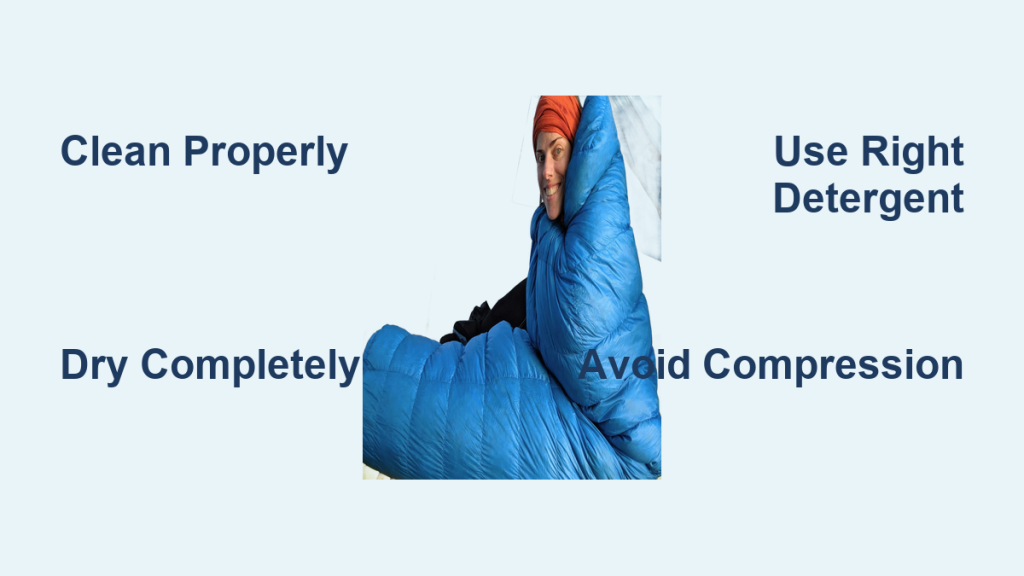Are you dreading the thought of washing your sleeping bag? It’s a task many outdoor enthusiasts put off, but a dirty sleeping bag loses its insulating properties and can harbor unpleasant odors. A quick refresh can restore loft and keep you cozy on future adventures. This guide will walk you through everything you need to know.
Cleaning a sleeping bag properly can seem daunting, but it’s essential for maintaining its performance and extending its lifespan. This comprehensive guide will cover everything from assessing when to clean your bag to choosing the right cleaning method, whether it’s a gentle hand wash or a careful machine cycle. We’ll also delve into drying techniques and essential maintenance tips to keep your sleeping bag fresh and functional for years to come. By the end of this article, you’ll be confident in your ability to clean your sleeping bag and ensure a comfortable night’s sleep outdoors.
When to Clean Your Sleeping Bag
- Visible Dirt & Grime: Obvious signs like mud, leaves, or food stains.
- Lingering Odors: A persistent smell even after airing it out.
- Loss of Loft: When the insulation clumps and doesn’t feel fluffy.
- Decreased Warmth: If you’re feeling colder than usual despite similar temperatures.
- After Heavy Sweat: Especially after strenuous activity or humid conditions.
Understanding Your Sleeping Bag’s Fill Type
The cleaning method depends heavily on your sleeping bag’s fill.
- Down: Requires specialized down-specific detergents and careful handling. Down loses its insulating properties when wet and can clump easily.
- Synthetic: More durable and easier to clean than down. Can generally withstand more aggressive washing.
- Waterproof/DWR Treated: These bags require special care to maintain their water repellency.
Choosing a Cleaning Method

Hand Washing (Recommended for Down)
This method is gentler and allows for more control, ideal for delicate down sleeping bags.
Diagnosing the Issue:
Before you start, assess the level of dirt. Lightly soiled bags may only need spot cleaning.
Fix Steps:
- Fill a Tub: Use a clean bathtub or large plastic bin.
- Add Detergent: Add 2 tablespoons of down-specific detergent (like Nikwax Down Wash) or mild soap. Avoid harsh detergents.
- Submerge and Soak: Fill with lukewarm water and submerge the sleeping bag. Gently agitate and soak for 15-30 minutes.
- Rinse Thoroughly: Drain the soapy water and rinse multiple times with clean, lukewarm water until no suds remain. This is crucial!
- Gentle Press: Gently press out excess water – do not wring!
Testing:
Visually inspect for any remaining detergent. Repeat rinsing if necessary.
Machine Washing (Suitable for Synthetic)
Machine washing is faster but requires caution. Always check the care label.
Diagnosing the Issue:
For heavily soiled synthetic bags, machine washing is a good option.
Fix Steps:
- Use a Front-Loading Washer: Top-loading washers with agitators can damage the bag.
- Gentle Cycle: Select the gentle or delicate cycle with cold water.
- Use Down/Synthetic Detergent: Use the appropriate detergent.
- Wash Alone: Do not wash with other items.
- Rinse Twice: Add an extra rinse cycle to ensure all detergent is removed.
Testing:
Inspect for any damage or remaining detergent after the cycle.
Spot Cleaning (For Minor Stains)
Ideal for localized dirt or spills.
Diagnosing the Issue:
Small spills or localized dirt patches.
Fix Steps:
- Mix Solution: Mix a small amount of down/synthetic detergent with lukewarm water.
- Apply to Stain: Gently apply the solution to the stain with a soft cloth.
- Rinse: Rinse the area with clean water and blot dry.
Drying Your Sleeping Bag – The Most Critical Step
Drying is crucial to prevent mildew and restore loft.
- Low Heat is Key: Use the lowest heat setting on your dryer. High heat can melt synthetic fibers and damage down.
- Dryer Balls: Add 2-3 clean tennis balls or dryer balls to help break up clumps and restore loft.
- Multiple Cycles: Expect to run the dryer for several cycles, checking frequently.
- Air Drying (Down): For down bags, air drying is often recommended as a final step. Hang in a well-ventilated area, avoiding direct sunlight.
- Complete Drying: Ensure the bag is completely dry before storing. Dampness leads to mold and mildew.
Prevention Tips and Maintenance Advice
- Use a Liner: A sleeping bag liner absorbs moisture and dirt, reducing the need for frequent washing.
- Air Out Regularly: After each use, air out your sleeping bag in a well-ventilated area.
- Store Properly: Store your sleeping bag uncompressed in a large storage sack. Compression sacks can damage the insulation over time.
- Avoid Direct Sunlight: Prolonged exposure to sunlight can degrade the fabric and insulation.
- Repair Tears Promptly: Small tears can lead to larger problems and loss of insulation.
Pro Tips
- Check the Care Label: Always prioritize the manufacturer’s instructions.
- Down-Specific Detergent is Essential: Regular detergents strip down of its natural oils.
- Don’t Overwash: Frequent washing can damage the insulation.
- Use a Large Capacity Washer/Dryer: A cramped machine can cause uneven cleaning and drying.
- Dry Completely: This cannot be stressed enough!
- Fluff Regularly: Gently fluff your sleeping bag after each use to maintain loft.
- Consider a Professional Cleaning: For expensive or delicate bags, professional cleaning is a worthwhile investment.
Professional Help

- Signs You Need a Pro: Stubborn stains, significant damage, or if you’re uncomfortable cleaning it yourself.
- What to Look For: A cleaner specializing in outdoor gear.
- Cost Range: $50 – $150 depending on the bag’s size and condition.
- Warranty Considerations: Check if professional cleaning voids your warranty.
FAQ
Q: Can I use fabric softener?
A: No, fabric softener can coat the insulation and reduce its effectiveness.
Q: How long does it take to dry a sleeping bag?
A: It can take several hours, even with a dryer. Air drying can take a day or more.
Q: What if my down bag still smells after cleaning?
A: Ensure you used a down-specific detergent and rinsed thoroughly. Repeat the washing process if necessary.
Q: Can I iron my sleeping bag?
A: No, ironing can damage the fabric and insulation.
Q: How do I restore loft to a compressed sleeping bag?
A: Fluff it gently and let it air out for several hours. Using a dryer with dryer balls can also help.
Alternative Solutions
- Dry Cleaning (Not Recommended): Harsh chemicals can damage the insulation.
- Waterproofing Replenishment: If your bag has lost its water repellency, consider applying a DWR spray after cleaning.
| Solution | Pros | Cons | Best For |
|---|---|---|---|
| Hand Washing | Gentle, Controls Process | Time-Consuming | Down Sleeping Bags |
| Machine Washing | Fast, Convenient | Risk of Damage | Synthetic Sleeping Bags |
| Professional Cleaning | Thorough, Safe | Expensive | Expensive or Delicate Bags |
Keep Your Sleeping Bag Running Smoothly
By following this guide, you can confidently clean and maintain your sleeping bag, ensuring it remains a comfortable and reliable companion on your outdoor adventures. Remember to prioritize the care label instructions and choose the appropriate cleaning method based on your bag’s fill type.
Now that you know how to clean your sleeping bag, share your experiences or ask any questions in the comments below!




